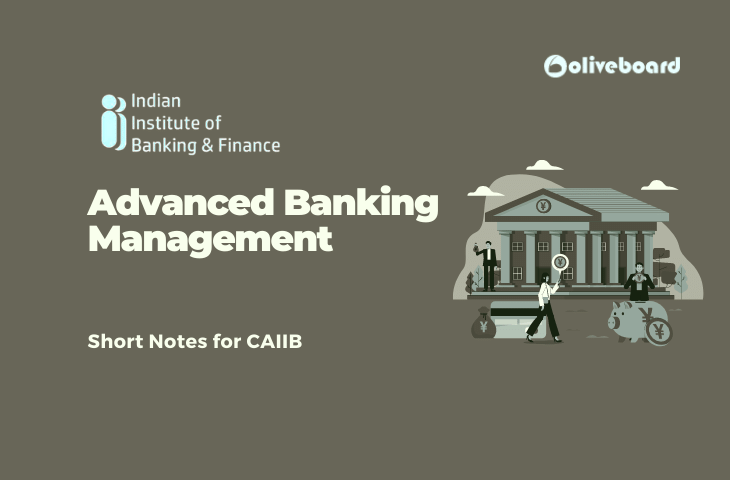Advance Banking Management – Modules:
MODULE – A: Economic Analysis
MODULE – B: Business Mathematics
MODULE – C: HRM in banks
MODULE – D: Credit Management
Module A: Economic Analysis
An economic analysis provides a lucid picture of the current economic scenario and whether the company/ business will sail through comfortably, surge ahead, stagnate, or slide down. Such an economic evaluation of a business is done through a complete appraisal of the market’s strengths, weaknesses, and fluctuations. You can apply several economic evaluation methods to determine where a certain business will stand in the future. The types of economic analysis are given below:
- Cost-Benefit Analysis
- Cost-Effective Analysis
- Cost- Minimisation Analysis
Cost-Benefit Analysis
This is a technique used to determine how feasible a project will be. In this kind of economic evaluation, the monetary cost of the project/ business and its returns are compared to reach the result. This is the most effective economic analysis, which provides insight into comparing and contrasting projects, help in determining whether an investment is ideal or not, and helps implement changes to the project/ business. After the cost-benefit analysis, a lucid picture of the outcome can be seen, and small business owners can make a sensible business decision.
Cost-Effective Analysis
In this type of analysis, the effectiveness of the project is weighed against its cost. In this case, it appears that low cost does not mean high effectiveness or vice versa. Through this analysis, it is seen that cost-saving does not always prove to be effective and give the desired results.
Cost-Minimization Analysis
This analysis looks for the most cost-effective way to complete a project. This economic evaluation method comes in handy when cost-cutting is a priority. It is also used when there are two or more ways to get the desired results. Cost-minimization analysis is mostly used in the health care sector.
Module –B: Business Mathematics
Business Math deals with profit or loss. Business mathematics is used by commercial companies to record and manage business work.
Business Mathematics Topics
The most important topics covered in Business Mathematics are:
- Profit and Loss
- Statistics
- Simple and Compound Interest
- Interest Rates
- Loans
- Markups and markdowns
- Taxes and Tax Laws
- Discount Factor
- Annuities
- Insurance
- Credit
- Depreciation
- Future and Present Values
- Financial Statements
Business Mathematics Basic Terms
- Selling Price:
- Cost Price:
- Profit:
- Loss: I
- Discount:
- Simple Interest:
- Compound Interest:
Business Mathematics Formulas
The basic Business Mathematics formulas are:
- Net Income Formula:
Net Income = Revenue – Expense
- Accounting Equation:
Assets = Liabilities Equity
Equity = Assets – Liabilities
- Cost of Goods Sold Formula:
COGS = Beginning inventory Purchase during the period – Ending inventory
- Break-Even point Formula:
Break-Even Point = Fixed cost / (Sales Price per unit – variable cost per unit)
- Current Ratio Formula:
Current Ratio = Current Assets / Current Liabilities
- Profit Margin Formula:
Profit Margin = (Net Income/ Revenue) × 100
- Return of Investment (ROI) Formula:
ROI = [(Invest gain – Cost of Investment)/ Cost of Investment] × 100
- Markup Formula:
Markup Percentage = [(Revenue- COGS)/COGS] × 100
Selling Price using Markup = (COGS × markup percentage) COGS
Where,
COGS = Cost of goods sold
- Inventory Shrinkage Formula:
Inventory Shrinkage = [(Recorded Inventory – Actual Inventory)/ Recorded Inventory] × 100
Module C: HRM in Banks
Human resource management in banks helps the administrators to efficiently complete tasks and achieve goals through the subordinates. It also helps to develop skills and improve labour productivity. Effective human resource management determines the success of a business or institution by creating a good, effective, and efficient working environment.
The aim of HRM in commercial bank
- Recruiting and training the staff
- Maintaining and developing cooperation between individuals and between the individuals and the departments.
- Monitor and supervise employees
- Motivate employees to work enthusiastically
- Effective and efficient use of resources
- Creating a bond between employees’ interests and the business interests.
- Explaining policies and procedures to the employees.
Module D: Credit Management
Credit Management is the process of granting credit to the customers, setting payment terms so that the customers pay the dues in time, recovering payments, and making sure that the customers, as well as the employees, abide by the company’s credit policies.
Benefits of Credit Management:
- Having a credit management plan helps protect the cash flow of the company, maximise performance, and reduce the risk of a default in payment.
- Cash flow protection.
- Reducing the number of late payments
- Increase business liquidity
- Faster debt recovery
- Improve DSO
- Plan and analyse the performance
- Risk reduction
- Reassuring potential lenders.
FAQs: Frequently Asked Questions:
The types of economic analysis are given below:
Cost-Benefit Analysis
Cost-Effective Analysis
Cost-Minimization Analysis
Credit Management is the process of granting credit to the customers, setting payment terms so that the customers pay the dues in time, recovering payments, and making sure that the customers, as well as the employees, abide by the company’s credit policies.
